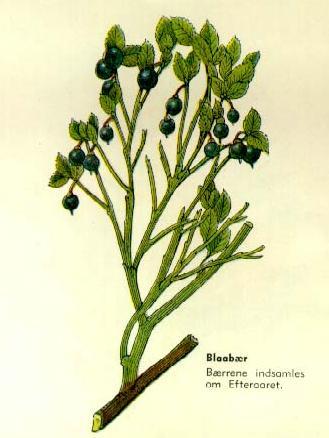Did you know, that you can go out to pick blueberries, krækiberries (crowberries) and mushrooms during your stay in our cottages? |
|
The
blueberries are healthy food. According to late investigations an
active ingredient, antocyanoacid, is found in blueberries (at least in
Iceland). The active ingredient is good for the eyes, especially for
night seeing and for eyes under strain. The
berries are picked in late summer or in the early autumn. Some years
there is a lot of berries, but other years the berries are sparse and
difficult to find. There are three types of blueberries found in the
northern part of Iceland. All of hese are to be found in the wilderness
close to the cottages at Kaldbakur.
Krækiber (Empetraceae) are black and smaller than blueberries. Krækiber are easier to find, most of the times. An icelandic wine is made from these berries. The wine "factory " (small family business) is indeed situated in Husavik! The name of the wine is "Kvöldsól " or "Evening sun". Some other kinds of wild
berries are found, but it is not common to use it for food. Wild strawberries are not common to find in Iceland but it is possible to find. Look where there are birch trees growing in warm spots facing south. All the berries in Iceland are considered healthy and were used as medicine in the old age. Here you can find some useful information about the Icelandic flora and also here One
writer wrote: "The days are shorter, and the air feels like fall. Our
neighbor just down the hill has begun saddling up the horses, riding
tall in the saddle, anticipating the trips to collect the sheep in the
highlands. It is also time to collect the berries. Yesterday we spent a
few hours in the cool air collecting "krækiber," or
crowberry,
andwild blueberries - enough to have for breakfast and to bake coffee
cakes. Sadly, it only took a moment for us to finish the one perfect
strawberry harvested from the plants I put in the garden this spring"
|
 |
|
In Iceland there are around 1900 known species of mushrooms. They are divided into many subgroups and only few of them are used as food. Be careful and ask before you eat picked mushrooms.
|
 Mushrooms
should be picked in dry weather shortly after rainfall. Some of the
most common mushroom species grow near certain types of trees, after
which they are named, such as the Larch Bolete (Lat. Suillus
grevillei), easily recognizable due to its yellowish color.
Mushrooms
should be picked in dry weather shortly after rainfall. Some of the
most common mushroom species grow near certain types of trees, after
which they are named, such as the Larch Bolete (Lat. Suillus
grevillei), easily recognizable due to its yellowish color.